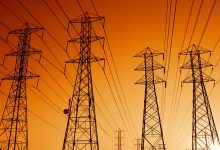Concerns that retailers will try to further dilute reforms to the wholesale market introduced by new demand response initiatives have been raised at the Australian Energy Market Commission held a hearing in Sydney to hear objections to its draft proposals.
Under the draft rules, large energy users would be able to offer reductions in electricity demand to the National Electricity Market, which would receive payment at market prices in the same way that generators currently do.
Electricity users would offer to reduce their consumption, with the potential for a third-party aggregator to act as the intermediary between the energy users and the national electricity market.
This would allow for an extra dimension to the management of the electricity grid, particularly at times of peak demand, allowing industrial customers to be financially rewarded during times when supplies to the rest of the grid, such as households and small businesses, could be constrained.
Large energy users would make offers to reduce electricity consumption through a ‘demand response aggregator’, that would have the same obligations and responsibilities that generators. Households will, at least initially, be excluded from the scheme while further work is undertaken on appropriate consumer protections.
However, not all are happy with the proposed rules, with some energy market participants claiming that the rule change will work to make the operation of the energy market more complex, and that more time is needed to understand the impacts that such changes will have on the market, particularly in the context of other reforms currently underway.
An objection has been submitted by Simec Energy Australia, who has requested that the AEMC host a hearing to examine some outstanding issues that Simec believes remain unresolved, following the AEMC’s draft determination where the rule-maker indicated it would support changing the market rules in favour of establishing a wholesale demand response mechanism.
Such a mechanism would represent a step-change in the operation of the Australian electricity market, but Simec Energy insists that reforms underway now should be monitored before a new mechanism is introduced into the mix.
Simec pointed to the transition to 5-minute settlement in the National Electricity Market as another reason to take a ‘wait-and-see’ approach. Simec suggested it would be better to wait until the 5-minute settlement reforms had come into place in 2021 before further changes were made to the way the market operated.
Simec forms part of the GFG Alliance, which is undertaking both substantial investments in large-scale solar and storage projects, as well as managing significant steel production facilities in Whyalla through the acquisition of the former OneSteel factory. The consortium therefore serves as a market participant on both the demand and supply sides of the National Electricity Market.
The Australian Energy Council has also submitted its own, alternative, rule change request that would hand greater control to electricity retailers regarding participation in a demand response mechanism. There are fears that this alternative approach would see retailers become the ‘gatekeepers’ to a demand response mechanism, dictating who can and cannot participate.
AEMC agreed to run a short hearing to receive further details about the concerns, which will be held in Sydney, with two further workshops to be run by the AEMC in coming weeks.
The Australia Institute joined the Public Interest Advocacy Centre and the Total Environment Centre in submitting the original rule change request to the AEMC for the introduction of a wholesale demand response mechanism.
PIAC’s Craig Memery and the Total Environment Centre’s Mark Byrne addressed some of the concerns that have been raised in a piece published in RenewEconomy.
Making its own case for the demand response mechanism, The Australia Institute has released new research that shows Australia may be falling behind the rest of the world in integrating demand response mechanisms into energy markets.
Strong progress is being made towards the introduction of demand response mechanisms in the United States, Europe and China, the world’s three largest electricity markets and The Australia Institute has used the research to question whether Australia will keep pace.
“The rest of the world is charging ahead with energy market modernisation and Australia is now poised to make a major reform that will put us at the leading edge,” The Australia Institute’s Dan Cass said
“The three biggest electricity markets in the world are moving to open up their networks to demand response competition: China, the United States of America and the European Union.”
The Australia Institute has also argued that it is crucial that participation in a demand response mechanism remains as open as possible, and that retailers shouldn’t have the ability to prevent large energy users from participating in a mechanism through a third-party aggregator.
“The big energy retailers want to prevent competition. They want to be the gate-keepers and decide whether or not their customers participate in emerging, digital energy markets. The ACCC has rejected the AEC gate-keeper model, because it is anti-competitive and would harm the interests of energy consumers.”
“Progressing this reform and allowing everyone, including big industrial users and regular households, to engage in demand response as soon as possible will reduce energy costs and emissions while also improving reliability.”
The AEMC will continue the development of the potential demand response rule change, with a final recommendation expected to be delivered by the rule-maker in mid-September.








